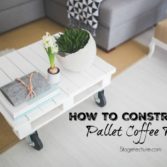Entry #414, February 12, 2011
Happy D.I.Y. Saturday at Stagetecture! How are you making it through the harsh winter? For most of us we are trying to cut our energy bills down, and keep our homes warmer, right? As we continue “How to Make your Home Life Easier” month, I will show you easy ways to make your home more energy efficient.

Start learning how to make your home more energy efficient
Many of these tips are in this great energy tips video from the Massachusetts Government Energy Department. You will see home owners taking easy steps to get their home to be more energy efficient. There is also good tips for how to go about assessing what your home needs for energy efficiency from Energy Savers.gov.
You Tube Video: Saving Money with Energy Efficiency
Tips for Do it Yourself Energy Saving Tips:
1.) Do-It-Yourself Home Energy Assessments

.
You can easily conduct a do-it-yourself home energy assessment (also known as a home energy audit). With a simple but diligent walk-through, you can spot many problems in any type of house. When assessing your home, keep a checklist of areas you have inspected and problems you found. This list will help you prioritize your energy efficiency upgrades.
Locating Air Leaks
First, make a list of obvious air leaks (drafts). The potential energy savings from reducing drafts in a home may range from 5% to 30% per year, and the home is generally much more comfortable afterward. Check for indoor air leaks, such as gaps along the baseboard or edge of the flooring and at junctures of the walls and ceiling. Check to see if air can flow through these places:
- Electrical outlets
- Switch plates
- Window frames
- Baseboards
- Weather stripping around doors
- Fireplace dampers
- Attic hatches
- Wall- or window-mounted air conditioners.
Also look for gaps around pipes and wires, electrical outlets, foundation seals, and mail slots. Check to see if the caulking and weather stripping are applied properly, leaving no gaps or cracks, and are in good condition.
Inspect windows and doors for air leaks. See if you can rattle them, since movement means possible air leaks. If you can see daylight around a door or window frame, then the door or window leaks. You can usually seal these leaks by caulking or weather stripping them. Check the storm windows to see if they fit and are not broken. You may also wish to consider replacing your old windows and doors with newer, high-performance ones. If new factory-made doors or windows are too costly, you can install low-cost plastic sheets over the windows.
For more energy efficiency tips and information on determining if you have air leaks, advice for insulation, heating and cooling equipment – click here.
2.) Reducing Your Electricity Use
There are many ways you can reduce electricity use in your home and help reduce your energy bills. Also, if you’re interested in using a small renewable energy system to make your own electricity, reducing your electricity loads will help make your system more cost effective.

See how you can save on lighting your home
You can reduce electricity use in your home by focusing on where and how you use electricity in these areas:
-
Appliances and electronics
Purchase energy-efficient products and operate them efficiently.
-
Lighting
Purchase energy-efficient products, operate them efficiently, and incorporate more daylighting into your home using energy-efficient windows and skylights.
-
Electric space heating and cooling
Purchase energy-efficient electric systems and operate them efficiently. Incorporate passive solar design concepts into your home, which include using energy-efficient windows. Properly insulate and air seal your home. Select an energy-efficient heating system that doesn’t use electricity.
-
Electric water heating
Purchase an energy-efficient electric water heater and operate it efficiently. Or select an energy-efficient water heater that doesn’t use electricity
3.) Insulation and Air Sealing
You can reduce your home’s heating and cooling costs through proper insulation and air sealing techniques. These techniques will also make your home more comfortable.

Seal up air leaks in windows and doors
Any air sealing efforts will complement your insulation efforts, and vice versa. Proper moisture control and ventilation strategies will improve the effectiveness of air sealing and insulation, and vice versa.
Therefore, a home’s energy efficiency depends on a balance between all of these elements:
- Air sealing
- Insulation
- Moisture control
- Ventilation.
A proper balance between all of these elements will also result in a more comfortable, healthier home environment.
For more green living ideas on Stagetecture, click here.
Receive Stagetecture's Daily Lifestyle Ideas
FREE - Daily emails with recipes, home decor, D.I.Y, and lifestyle tips! : ) Who doesn't need help?






Leave a Reply